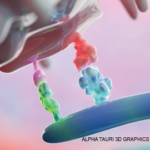In January 2010, data were published regarding the German biologics registry RABBIT. These data focused on incidences and recurrence rates of malignancies in patients treated with TNF inhibitors compared with other agents (See Figure 2, p. 35).9 For incident tumors, the rates per 1,000 patient-years were 8.4 in patients treated with conventional DMARDs and 5.1 in patients treated with TNF inhibitors. Using a nested case-control approach, there was no difference in exposure to biologic agents between patients who developed cancer and those who did not.
Taken together, these results are reassuring regarding the risk of new malignancies facing patients treated with TNF-inhibiting agents. They confirm data from the National Data Bank for Rheumatic Diseases, which showed no overall increase in the risk of solid malignancies in patients treated with biologic agents.10
In addition to the risk of a first cancer, another crucial clinical question is whether we can use TNF inhibitors to treat patients with a history of malignancy and, if so, how long we should wait after treatment of the first tumor to initiate anti-TNF treatment. Both the German and the British registries addressed this issue. Of 3,260 patients treated with TNF inhibitors in the German registry, 1.8% had a prior tumor compared with 3.1% of the 1,774 patients treated with nonbiologic DMARDs alone. This difference likely reflects the rheumatologists’ reluctance in prescribing TNF inhibitors to this patient population. The rates of recurrence of a new tumor were 45.5 per 1,000 patient-years with TNF inhibitors and 31.4 with nonbiologic DMARDs. This corresponds with a nonsignificantly elevated recurrence rate ratio of 1.4 (p = 0.6). The median time span between the prior tumor and inclusion in the registry (and start of either anti-TNF or DMARD therapy) was four years (IQR 2–10) in the group treated with TNF inhibitors and five years (IQR 3–11) in the nonbiologic DMARD-treated group.
If nothing else, the name tumor necrosis factor ties this cytokine to malignancy and suggests vigilance in its long-term use.
Although the German data could not rule out an increased recurrence risk with use of TNF inhibitors, recent data from the British Society of Rheumatology Biologics Register (BSRBR) are more reassuring.11 In the BSRBR, 177 patients treated with TNF inhibitors and 117 patients treated with DMARDs had a prior malignancy, diagnosed with a mean time of 11.5 years (TNF inhibitors) and 8.5 years (nonbiologic DMARDs) before inclusion in the registry. The recurrence rate was 25.3 per 1,000 patient-years in the TNF inhibitor group and 38.3 for DMARD-treated patients. These data supported an even lower risk of recurrence for patients treated with TNF inhibitors. Nevertheless, this registry also found that only 1.6% of all patients treated with TNF-inhibiting agents had a prior malignancy, compared with 3.6% of patients treated with nonbiologic DMARDs. This information, along with the relatively long duration of greater than 10 years before prescribing TNF inhibitors, suggests that physicians selected the patients treated with TNF inhibitors carefully. The lower recurrence rate in the anti-TNF treatment group might only reflect that this selection process was appropriate, and the results therefore cannot be generalized to all patients with prior malignancies.
